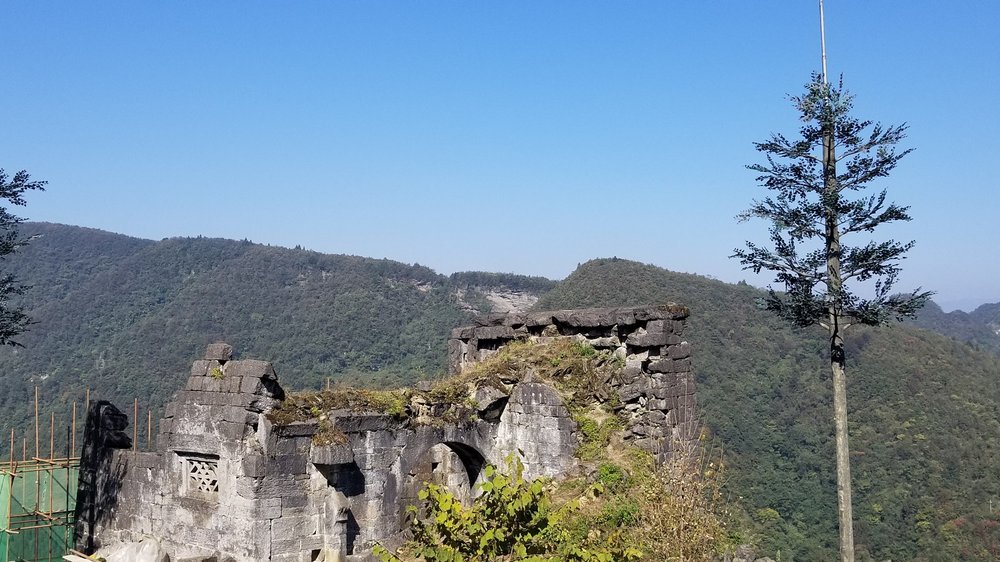China
Tusi Sites
The Tusi Sites are three examples of the Tusi system in which the inheritance of official positions was granted to tribal leaders in ethnic minority regions.
The practice was used in China’s feudal period between the 13th and 20th centuries. Laosicheng Site, Hailongtun Site and Tang Ya Tusi Site are the archaeological remains of former tribal domains located in mountainous regions in southwest China. They are also testimony to the traditional cultures and cultural practices of the Tujia, Gelao and Miao Ethnic Peoples.
Community Perspective: Frederik made an almost accidental visit to "Tujia Old Fortress” in Laosicheng in 2011, while Stanislaw visited that same site in 2019 and explained the logistics for individual travellers. Zos managed to visit all three components.
Site Info
Official Information
- Full Name
- Tusi Sites (ID: 1474)
- Country
- China
- Status
-
Inscribed 2015
Site history
History of Tusi Sites
- 2015: Inscribed
- Inscribed
- WHS Type
- Cultural
- Criteria
- ii
- iii
Links
- UNESCO
- whc.unesco.org
All Links
UNESCO.org
- whc.unesco.org — whc.unesco.org/
News Article
- June 13, 2016 thestar.com.my — Ruins of the Tangya Tusi fortress now open to the public
Community Information
- Community Category
- Archaeological site: Far Eastern
Travel Information
Recent Connections
View all (10) .Connections of Tusi Sites
- Trivia
- History
- Architecture
- World Heritage Process
- Religion and Belief
- Human Activity
- Constructions
- Timeline
News
- thestar.com.my 06/13/2016
- Ruins of the Tangya Tusi fortress …
Recent Visitors
Visitors of Tusi Sites
- Alexander Lehmann
- Alex Goh
- Atila Ege
- Bill Koo
- Bin
- Bram de Bruin
- chenboada
- Chen Taotao
- Christravelblog
- dachangjin3
- Els Slots
- Fan Yibo
- Frederik Dawson
- Haining Guan
- Hanming
- henryjiao18
- HE SHAOMIN
- Jeffrey Chai Ran
- Joel on the Road
- Junwang111
- jxrocky
- Kasper
- lichia
- Luke LOU
- MaYumin
- Michal Kozok
- MikeMa1999
- Miloš Tašković
- Pang Liang Fong
- Sergio Arjona
- Shandos Cleaver
- Stanislaw Warwas
- trekkie900
- Vincent Cheung
- Xiquinho Silva
- Yang Chengyu
- YAO WEI
- Yongcheng Liu
- Zhou Yan
- Zoë Sheng
- Zos M
Community Reviews
Show full reviews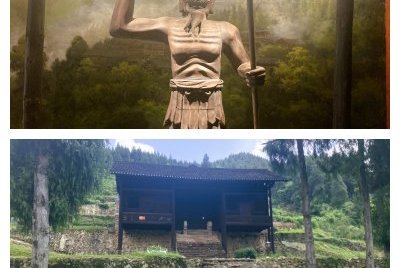
As it has been 5 years already since the last review, I can provide some updated information on visiting the location of Laosicheng – the "Machu Picchu of China".
When doing it all on public transport, be aware that it takes a full day from Zhangjiajie. The return trip (including 2-3 hours at the site) takes 9 hours at best; leaving 10+ hours between your departure from Zhangjiajie and any onward transport from that city upon return is even better.
I started from Zhangjiajie bus station (next to the Central Railway Station), where at 7.30 I caught the minibus to Yongshun (2h15). It is a beautiful route through the countryside, and the World Heritage Site is advertised with large signs along the road. You already pass the exit to the road to Laosicheng, but I stayed on the bus until the end to catch a Didi taxi as there were no drivers in the smaller towns. The driver who eventually picked me up in Yongshun wanted, in addition to the fare of 35 yuan, also 30 yuan for the return journey as he would have to drive back from this rather deserted place empty.
He dropped me off at the visitor center and museum, where the main feature is a grand video about the site’s history (as is common in any site museum in China). The main emphasis is on how remote this region has always been and in a certain sense still is. This is also …
Keep reading 0 comments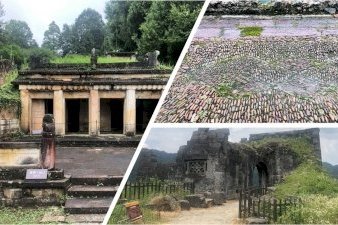
[Photos: Left - tomb at Tangya Site. Top Right - ethnic pebble pattern at Laosicheng Site. Lower Right - barbican at Hailongtun Fortress]
An empire can only grow so much until the people at the peripheries felt discontented and neglected by the central government. Maintaining control need more than military prowess. Governing an area so large and with multitude of ethnicities makes it even extra difficult. So, if you are the emperor of a multi-ethnic and vast empire in the 13th century, what would you do to exert control on your dominion?
China as we know today is shaped by how dynastic emperors kept their grip to power all the way from imperial center in the capitals. Since the Yuan Dynasty (13th century) to early Qing Dynasty (20th century), the emperors extended their influence over ethnic minorities by legitimizing the tribal rule. They made the tribal leaders as hereditary rulers and established the Tusi System. The system granted political autonomy, retained the ethnic identity and at the same time allowed the central administration exerted its leadership.
The three inscribed sited represented the Tusi Domains in southwest China. As the center of military and political affairs, these sites reflected the system of governance over the peripheries which was recognized under criterion 3. Spatial layout of these sites showed the imperial Chinese administration and retained cultural traditions of the ethnic minorities, illustrating OUV of criterion 2.
All three sites illustrated a distinctly Chinese imperial management of the ethnic …
Keep reading 0 comments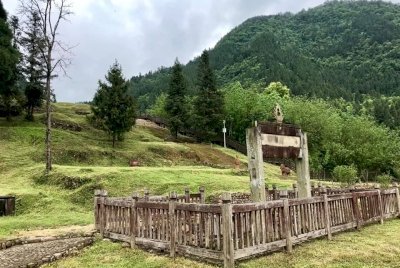
Visited April 2019. I have visited only one component of three, the easiest to get, the largest, the oldest and the best preserved (that’s what they say) – Laosicheng (老司城) tusi domain in Hunan Province, not too far from Yongshun ((永顺) where I started the journey. Here you must find the local bus station (it does not look like a bus station, hidden somewhere among communist era apartment blocks) from where a minibus will take to the site; there is at least one minibus an hour, the last one at 5 p.m.
The archaeological site is the last stop, after 40-minute drive through very nice area. When we got there you do not have to ask anymore because everything is clearly mark, although… I was not able to find the ticket office, so I visited without paying. I went to the police station to leave my backpack where I had a cup of green tea with the policemen and guards. And the I went down to the river. There used to be two bridges to cross it (still seen on the plan of the area), but one of them has gone. On this side of the river there are remains o village walls and watch-out tower, and a newly reconstructed temple. I wanted to see the Hall of the Patriarch and was shown the way by local people – Laosincheng is still a living village. It is located at least 2 kilometres from the bridge, on the other side, …
Keep reading 0 comments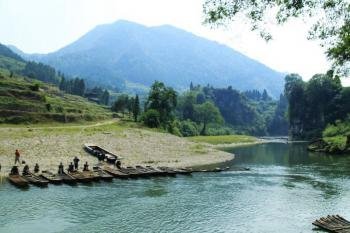
Tusi Sites are the very surprising nomination for me and when I heard these sites have been inscribed as World Heritage Site, I was laughing out loud for the memories of my visit to Laosicheng village. In December 2011, my friends and I joined the tour group of Europeans and oversea Chinese to visit Xiangxi Tujia and Miao Autonomous Prefecture in Hunan. After 3 and a half amazing days in Zhangjiajie – Wulingyuan National Park and Tianmenshan National Park, our group continued our journey to the heartland of Xiangxi. After 3 blessed clear sky days we started to have problem with weather, when our mini coach left Zhangjiajie, it was heavy rain and snow. The driver drove very slowly along the small road for safety which we were really appreciated. I really did not know exactly what we were going since in the itinerary only stated that “visit Tujia old fortress”. We were already very behind the schedule when we reached the city of Yongshun. Our local guide almost decided to cut the program so that we can reached our final destination, Fenghuang, before 9 PM, but three out of nine tour members (not me) insisted that we should go to see the fortress, and the driver confirmed that if we can finish the sightseeing quickly, he will agree to take us there. I actually was in the camp that preferred to cut the program since I was not sure for night time safety as the guide told me that …
Keep reading 0 comments
